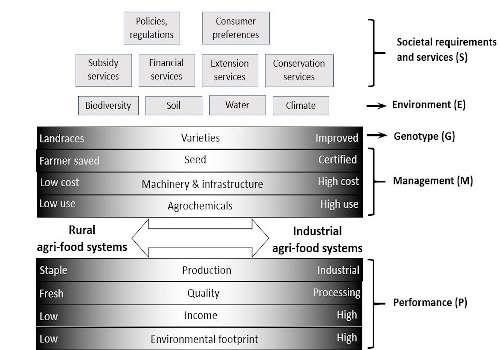
Achieving sustainable potato production and efficient use of resources requires research and innovation options to adjust to the challenges and transform current cropping and processing systems in both rural and industrial agri-food systems. Devaux and his co-authors suggest that two main options should be considered to increase food security and income generation while reducing the environmental footprint. “We need first to produce more with less through better input management and optimization and secondly produce just as much but waste less, both before and after harvest.”
More with less
More potatoes can be produced using the same or fewer resources by improving the planting material, generating better seed distribution mechanisms, using smart agriculture, and implementing better crop management techniques.
The recent discoveries of the potato genome sequence and the advances in breeding technologies present numerous exciting opportunities to improve potato production. Breeding improved varieties can lead to improvement in nutrient efficiency, pest and disease resistance, tolerance to drought, heat and salinity, as well as reduction of the time from planting to harvest.
The future of sustainable potato production depends on a renewable supply and distribution of pest-free planting material. More than 90% of seed potatoes in developing economies are produced by farmers and are of poor quality, which affects yield. The authors propose an integrated approach to reduce yield losses due to low-quality seed by combining the use of rapid multiplication techniques, improved varieties with resistance to biotic and abiotic stresses, better crop management practices, and improved storage. These seed system challenges faced by potato are common across vegetatively propagated crops. This is why the CGIAR Research Program on Roots, Tubers and Bananas has strongly supported cross-learning and collaborative research across root, tuber and banana crops to advance towards more sustainable seed systems.
Potatoes are highly adaptable and can grow in many types of environments. Remote sensing and geographical information systems tools coupled with decision support systems and precision agriculture technologies may contribute to increased productivity by ensuring potatoes are grown in optimal conditions.
Management practices that increase ecosystem services, such as natural soil fertility or biological control, must be implemented to avoid the ongoing soil degradation in current farming systems. Sustainable soil management will be critical for maintaining or increasing yields in the future.
Click here to see more...